Transient split with VolumeShaper
Can we use Cableguys VolumeShaper and its transient detection together with REAPERs routing capabilities to split a signal into transient and sustain sections? Yes we can! This is a another transient shaper on steroids!
Why split a signal by amplitude?
Splitting a signal into its transient and sustained components seems to be a powerful approach that gains more popularity. I covered another approach to split a signal by amplitude already in a previous post, which is similar to what we are doing today.
Instead of splitting a signal strictly by amplitude into an “upper” and “lower” part, we are splitting a signal into a short first section (the transient) and a more quiet section (the sustained part):
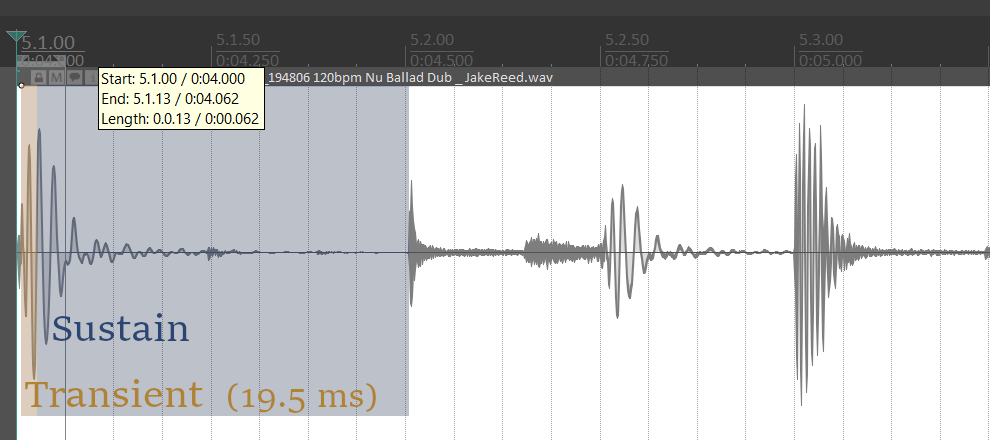
Transient detection and split
We are building our approach on Cableguys VolumeShaper, which ships a transient detection algorithm we can use to cleanly make above separation in any signal we want. Again, this allows us to throw any FX on either the transient or the sustained sections of a signal-
Catching the transient
We set up two of REAPER 7s FX containers.
One container for processing the transient and a second for the sustained part.
A 2-band joiner JSFX plugin mixes both stereo channels again:
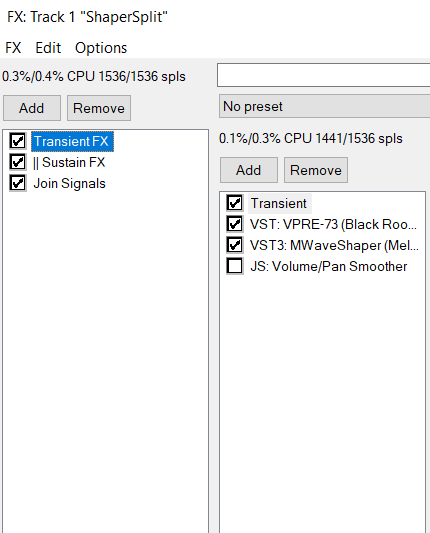
Transient Split FX Chain
To catch the transient we are using an instance of ShaperBox with the VolumeShaper:
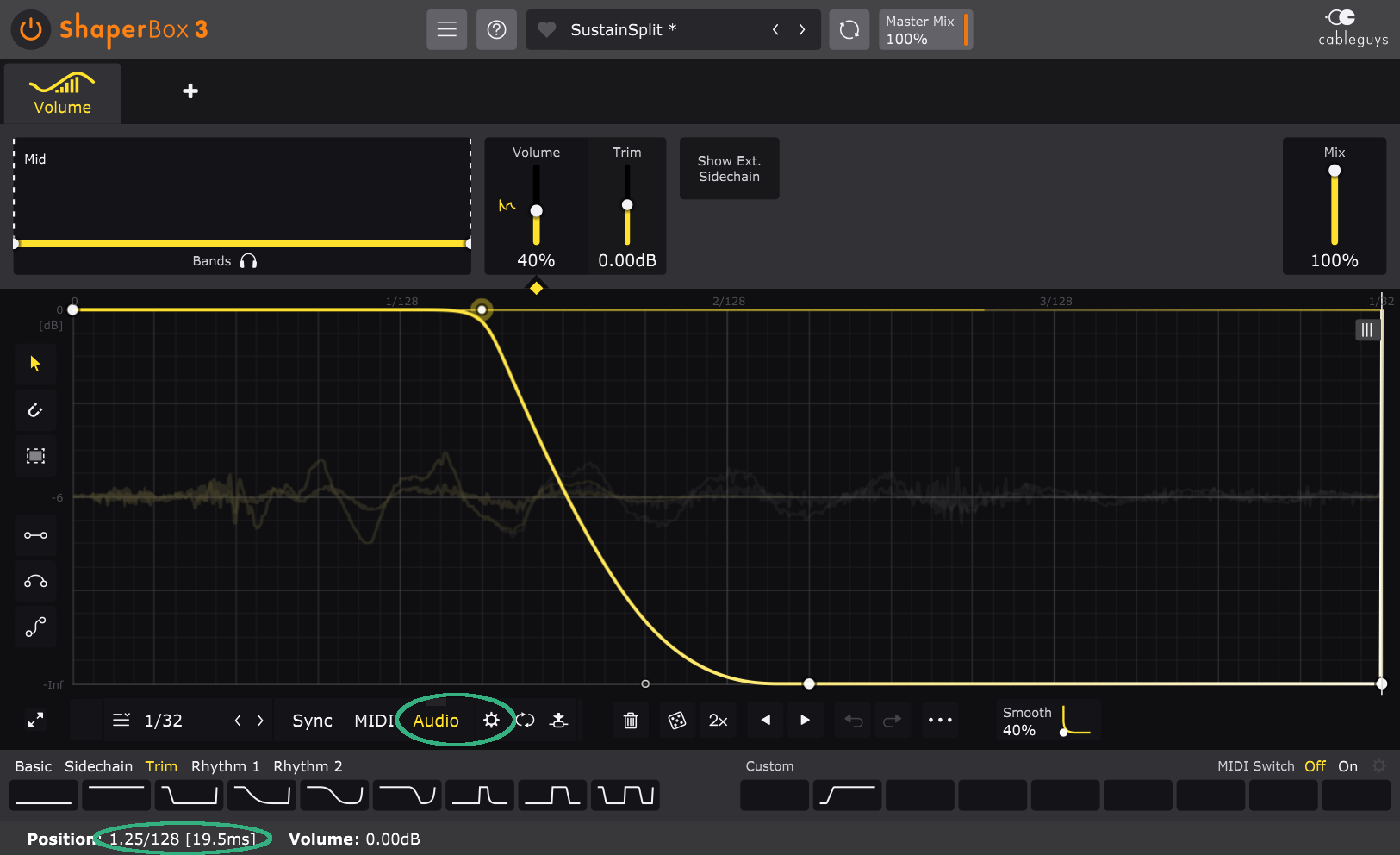
Transient selection with VolumeShaper
Also notice that we selected to trigger on “Audio”, with the settings cogwheel next to it.
By clicking, we access the transient detection configuration:
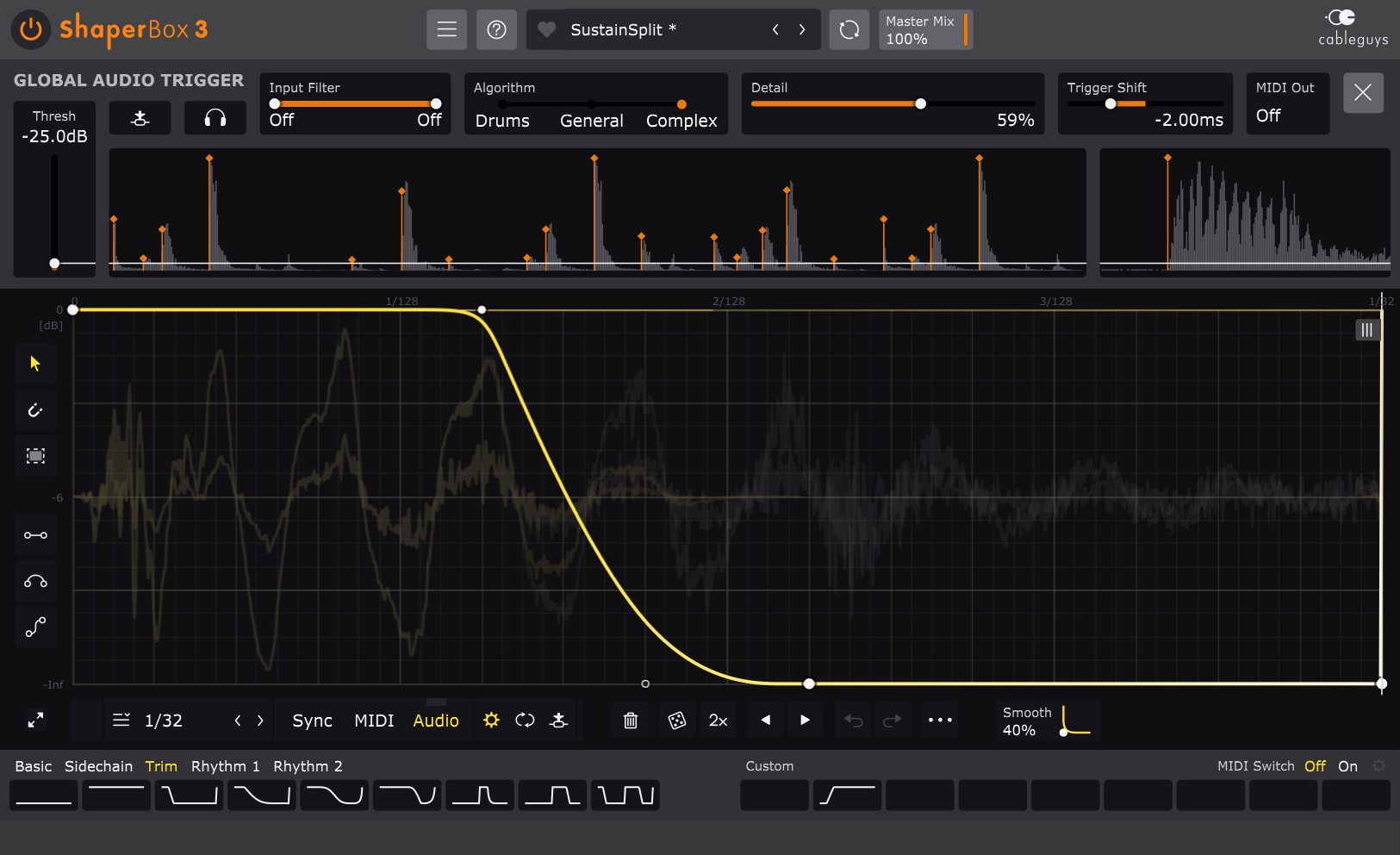
Transient detection configuration
By tweaking these settings we can configure exactly how we want to catch the transient. The configuration depends on the signal and where you want to make the cut.
Additionally, the shape of the fade envelop decides how you go from the transient signal to the sustained signal. You really have the option for any shape here!
Smooth transition to sustain
The second container, supposed to process the sustained section, should be run in parallel to the first.
Just right-click it in the FX list and select the corresponding option:
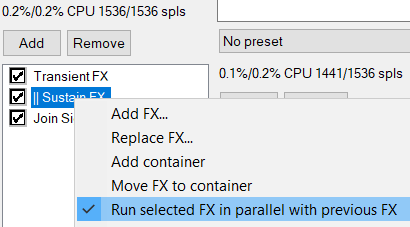
Set the sustain FX container to be parallel to the transient container
We route the sustain container to receive its input from channels 1/2 and send its output to 3/4:
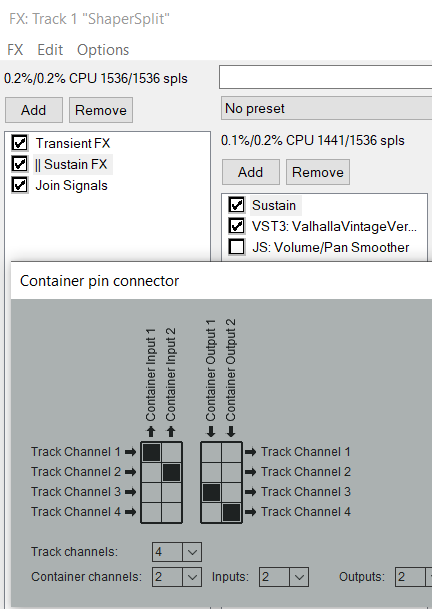
Container routing
Within the sustained container, we insert as a first FX instance an exact copy of the VolumeShaper we just configured above!
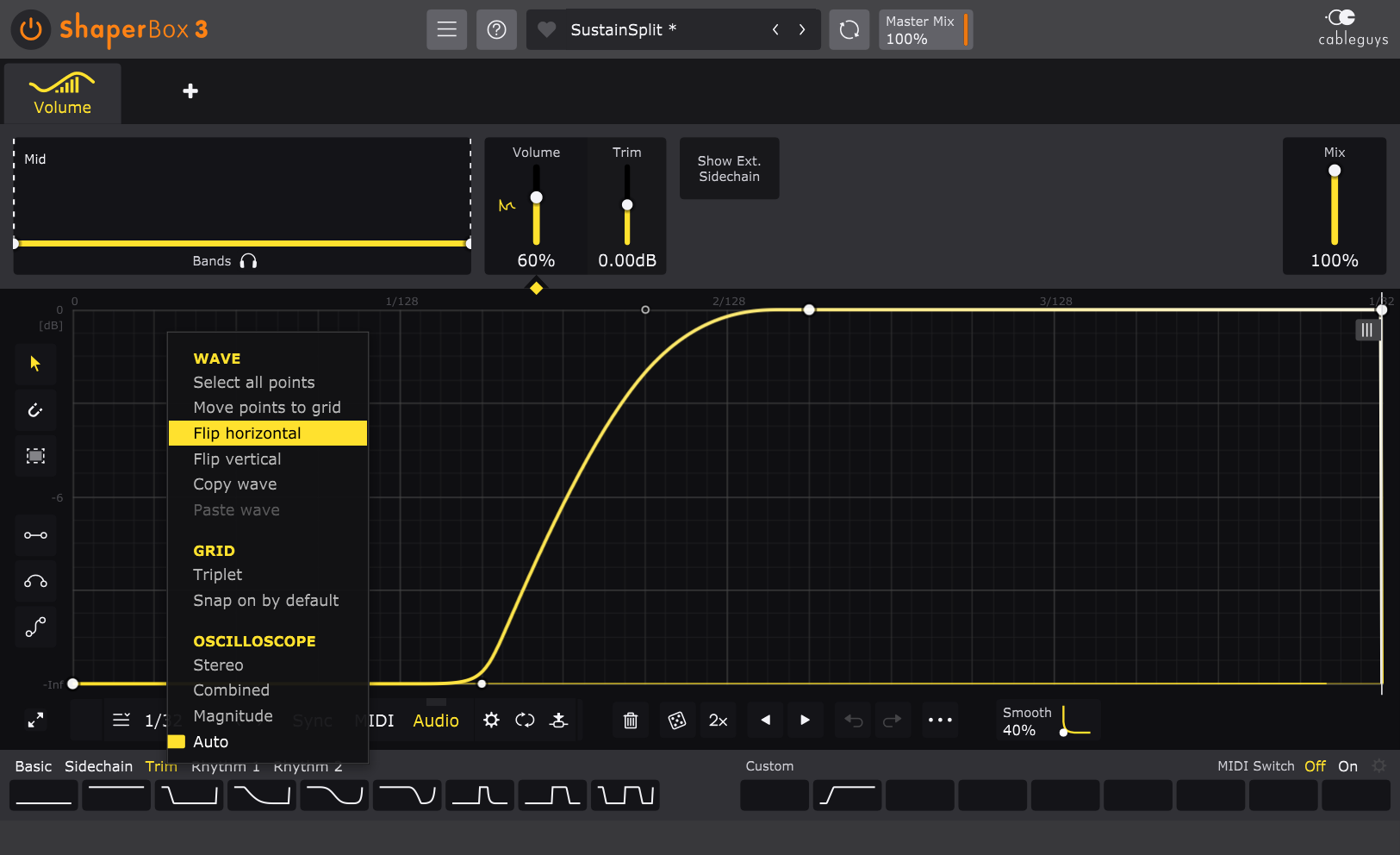
VolumeShaper for sustain selection
Does it null?
Yes! ShaperBox sometimes needs a playback-restart if it thinks it changed its behavior with respect to latency compensation. But if everything is set right, this approach is a very clean cut that does null with a phase-inverted non-treated copy.
Pro’s and con’s and crazy ideas
- pro: Easy to set up, as long if you own VolumeShaper.
- pro: Any cross fade possible
- pro: Reuse ShaperBoxs transient detection with all its capabilities
- con: You need to keep both VolumeShaper envelopes and transient configuration in sync, if you are after a clean separation
- con: Many tracks with multiple transient-split FX chains like this are probably resource heavy. The ReaGate approach is likely more light-weight, but inherently different.
- con: Not necessarily obvious which time-scale to choose (1/64 vs. 1/32 vs. 1/16, …) and always signal dependent
A couple of crazy ideas:
- MULTIBAND TRANSIENT SPLITTING
- Imagine a Signal where the transient section of different frequency sections happen at different times! I.e. shifting the cross-fade left/right for different bands.
- Different fade-shapes to leave out parts of the signal or emphasize certain sections by processing them in both FX chains
- Triggering on the transient, but totally wild envelope shapes to do things I cannot really anticipate right now
Sound examples
Here is the same dry drum loop, from the previous post:
How is this useful?